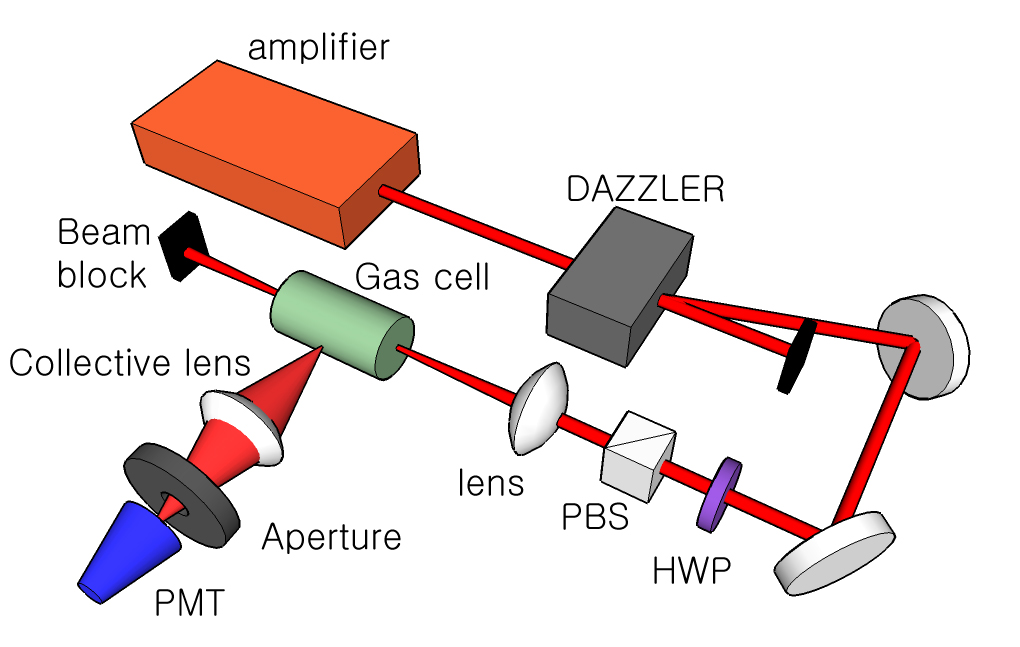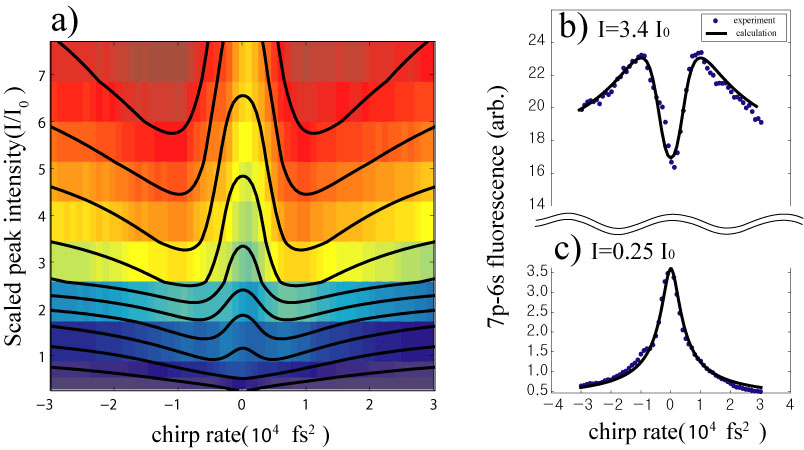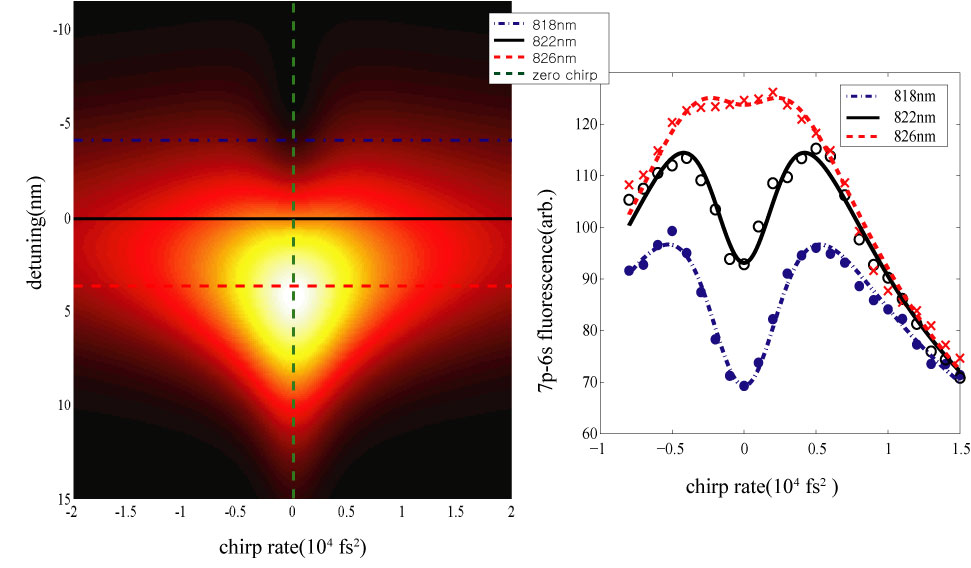Difference between revisions of "Quantum Control"
From KAIST Quantum Computing Lab Wiki
Jump to navigationJump to search| Line 7: | Line 7: | ||
<center>Fig.1: schematic diagram of the experimental setup</center> | <center>Fig.1: schematic diagram of the experimental setup</center> | ||
| + | |||
[[Image:Intensity_total_v4.jpg|center|400px]] | [[Image:Intensity_total_v4.jpg|center|400px]] | ||
<center>Fig.2: fluoresence as a function of chirp rates and transform-limited intensity of pulses</center> | <center>Fig.2: fluoresence as a function of chirp rates and transform-limited intensity of pulses</center> | ||
| + | |||
[[Image:Detuning_total_v6.jpg|center|400px]] | [[Image:Detuning_total_v6.jpg|center|400px]] | ||
<center>Fig.3: fluorescence as a function of detuning and chirp rates</center> | <center>Fig.3: fluorescence as a function of detuning and chirp rates</center> | ||
Revision as of 04:13, 28 August 2009
Two photon absorption in strong field
A shaped ultrafast pulse makes it possible to stir a quantum system and thus control a quantum process via light-matter interaction. Two photon absorption(TPA) processes between two states is one of famous systema of coherent control. We study coherent control schemes for a TPA process in a strong field. For a optimal coherent scheme to enhance TPA, strong field effects(dynamic Stark shift) has to be considered.


